Weekly cattle and sheep market wrap
Key points
- Mutton indicator lifts 62¢ to 170¢/kg.
- Red meat exports in September rose 35% from year-ago levels.
- The sheep producer intentions survey is now live.
Weather
Rain fell across much of southern Australia last week, with some parts of Victoria and NSW receiving more rain in the past week than over the entire month of September. Elsewhere, rain was more limited but large parts of southeast Queensland, South Australia, and southwest WA had at least some rain, in contrast to a relatively dry winter.
Cattle
Markets were disrupted this week by the public holiday on Monday, which prevented several sales from occurring. Numbers were down among sales that did run, which meant cattle yardings were down almost two thirds from last week to 27,396 head.
Indicator prices were mixed. The feeder steer indicator eased 4¢ to 218¢/kg liveweight (lwt), while the heavy steer indicator lifted 22¢ to 231¢/kg lwt. The reduced number of sales changed the composition of the indicators somewhat, affecting performance.
Sheep and lambs
Similar to cattle, fewer sales went forward this week due to public holidays, which meant yardings fell. Lamb yardings were down 82,192 from last week to 120,646 head, while sheep yardings were down 17,869 to 168,685 head.
Indicator prices lifted substantially compared to last week. The trade lamb indicator rose by 45¢ to 478¢/kg carcase weight (cwt), while the mutton indicator lifted 65¢ to 170¢/kg cwt.
In percentage terms, the mutton indicator rose 64% over the week, the largest single-week increase for the indicator on record. Fewer sales affected indicator performance, but prices increased week-to-week in every saleyard that did run except for the SA livestock exchange and Warwick.
Slaughter
Week ending 29/09
Public holidays affected processor capacity, meaning slaughter was lower than previous weeks. Cattle slaughter fell by 3,228 from last week to 124,875 head. Slaughter in NSW fell by 3,228 to 31,051 head, and Victorian slaughter eased by 1,001 to 14,608 head, while slaughter in Queensland, South Australia and Western Australia rose.
Combined sheep and lamb slaughter fell by 55,603 to 577,986 head. Slaughter fell in every state except South Australia and Queensland, and the largest drop was in Victorian lamb slaughter, falling by 32,166 to 196,871 head.
Exports
Australian red meat exports for September totalled 168,579 tonnes, 1% less than August and 35% more than September 2022.
Beef exports rose 40% year-on-year (YoY) to 98,712 tonnes, and the United States was the largest beef market for the month, with exports increasing 184% YoY to 24,431 tonnes. Promisingly, exports to Japan lifted for the first time this year, suggesting that demand for beef is beginning to rise after several subdued months.
Lamb exports rose 26% YoY to , while mutton exports lifted 30% YoY to 16,436 tonnes. Exports to China remained strong, rising 42% YoY to 16,021 tonnes and remaining Australia’s largest export market.
Sheep Producer Intentions Survey
MLA’s October Sheep Producer Intentions Survey aims to capture key information surrounding the 2023 lamb crop. This will include information regarding producer sentiment outlook, lamb flock size and breeds, lamb marking rates, and expected sales channels of lamb, amongst an array of other highly valuable information. The data collected by MLA is intended to replace Australian Bureau of Statistics (ABS) reporting of categorical sheep flock numbers, which ceased in January 2023.
MLA strongly encourages sheep producers to participate in this survey, offering participants the opportunity to receive benchmarking results for their flock relative to other producers with similar flock sizes in the same state. Producer participation will contribute to more accurate forecasts of the sheep industry, ultimately allowing MLA to return better insights to industry on what is happening and why.
To complete the survey, click here



